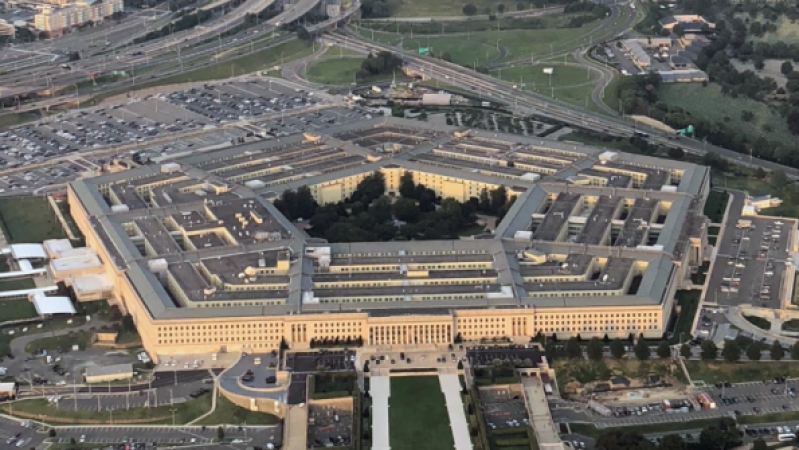January 31, 2020
By: Aaron Mehta
WASHINGTON — In American's technology marketplace, venture capital funds are crucial for pumping capital into small companies in need of cash infusions to keep operating. Part of the venture capital model is acknowledging that many of those businesses will fail, but if a few are successful, venture capitalists can make huge returns on their investments.
At a time when the Pentagon is working hard to entice small technology companies to work on defense projects, venture capital, or VC, funding could further mature technology and give entrepreneurs a chance to keep projects going. And yet, investors seem wary of putting forth cash to support companies with a defense focus.
Why? In the wake of the very public fight inside Google over working with the Pentagon — which ended with the company pulling the plug on its Project Maven participation — there was a consensus from the defense establishment that there may be a culture gap that is simply too large to overcome. But according to a trio of venture capitalists who spoke to Defense News in December, the reasons are simpler.
Katherine Boyle, with VC firm General Catalyst, said the culture issue is overblown for the VC community. The reluctance to work on defense programs comes down to a mix of “math and history," she said.
"The math is the reason why investors are hesitant to put a third of their fund into these types of technologies because history shows us that they haven't worked out well,” Boyle explained.
She said the math can be broken down into three factors: mergers, margins and interest rates.
On the first, she pointed to the fact that the defense sector has seen thousands of firms exit the market, sometimes because of acquisitions by primes. But, she argued, where mergers and acquisitions tend to occur in other parts of the world to acquire new technology or capability, in the defense realm it's all about contracting value. That makes it “very difficult for new technologies to enter the market and ultimately be acquired at the valuations that venture investors would need to see in order to have a return for their fund.”
In terms of margins, Boyle pointed out that defense firms are very focused on hardware, which requires a lot of investment upfront. That makes it “very difficult to invest in for venture capital firms because software has 80 percent margins, and it's much easier to build a company that can scale very quickly if it's software-based versus needing a lot of capital,” she said.
The third factor, interest rates, ties into the last two. For decades interest rates have allowed VC firms to expand dramatically — something that requires a constant flow of return from investments in order to turn around funds and quickly invest in another opportunity. In the world of defense, investors with $3 billion to $5 billion under management by the VC community will find it difficult to get the kind of returns investors are accustomed to from other markets.
All three of those factors come together in a mix that means there are very few chances for VC firms to invest in defense-related companies that match up with what a VC traditionally wants to see, said John Tenet, a partner with investment firm 8VC and vice chairman of the defense company Epirus.
“VC investors invest based on speed and scale and probability of a 10 to 20 times return. And so I think that's where you've seen a little bit of apprehension, at least in [Silicon] Valley,” Tenet said. “The exits haven't been that fast, and you sort of have these five big players on one side [that] sort of monopolize the market.”
From a pure numbers standpoint, a good benchmark for performance is to look at the S&P 500, according to Trae Stephens, co-founder and chairman of Anduril Industries and partner at Founders Fund. Over a 10-year period, an investor in the S&P can expect to get roughly 3 times their investment back. VC firms want to be able to beat that for an investment to be worth it.
To highlight the challenge of attracting VC funding to defense firms with potentially limited return, Stephens pointed to the case of Blackbird Technologies. A venture-backed player in specialized communications tech aimed at the defense market, Blackbird was bought in 2014 by Raytheon for about $420 million. That looks good on paper, but the reality is the churn isn't strong enough for a big, Silicon Valley-based venture capital group.
“A lot of times in the government, people say: ‘Oh, Blackbird is this, like, great example of a success story that was like a boost for venture.' It's actually not. It's not a venture scale of return for most funds,” he said. “There are some funds where the economics of [an exit that size] is really good, but for large, Silicon Valley tier-one funds, it doesn't move the needle. And so you have to have these multibillion-dollar opportunities in order for it to really make economic sense.”
Another issue raised by Stephens will be familiar to defense primes as well: concerns over sharing intellectual property with the Defense Department.
The department is essentially saying “you are the right product for us, now turn over your source code,” Stephens said. “It's crazy. We're literally doing to our companies in America what we're criticizing the Chinese for doing to their companies and to our companies when we enter that market. And so there has to be a better commercial practice for enabling companies to retain their IP and do business with the government without having to fight a legal battle every time they go through a contract.”
‘Knock down the doors'
Despite those concerns, all three venture capitalists that spoke to Defense News are involved in investments in defense-focused firms. So why are they spending their money in the sector? Mission is part of it — the belief that, as Americans, a stronger Defense Department benefits their firms.
But that only goes so far if dollars don't follow.
Once again, it comes down to math. Investing in a company focused on defense technologies, which may have to wait years to secure a contract with the Pentagon, isn't a great strategy for a VC firm looking for quick returns. But if a company is able to get government funding early on, the business suddenly becomes more worthy of investment, said Boyle.
“If the government is allocating capital in the right way, it will get VC dollars immediately. Like, it will follow so quickly,” Boyle said. “I see so many people come in to our office and they have an OTA [other transaction authority contract], and they're excited. It's a small, $1 million contract, and that is great for a seed company. But if that same company came in 18 months later and said, ‘Oh, by the way, the OTA has turned into a $10 million contract,' that would meet every milestone that I usually see to series A.” (An OTA is a type of contract that enables rapid prototyping; series A financing is the investment that follows growth from initial seed capital used to launch operations.)
“$10 million to the US government is nothing, but to [a] startup — $10 million is the best startup I've seen all year, if they're an 18-month-old startup and they're getting that kind of capital early on,” she said.
Added Stephens: “It means they're doing something right.”
That creates a chicken and egg scenario: Venture capitalists only want to invest in companies that already have a Pentagon contract, but small firms often can't keep the doors open long enough without external funding while waiting for the department's contracting processes to progress. While groups such as the Defense Innovation Unit — the Pentagon's technology hub — are helping speed along that process, it remains a problem with no easy solution, at a time when the Pentagon needs the nondefense technology community in ways it hasn't for decades.
Boyle believes there is a “growing group” of investors who see the strong success of a handful of companies like goTenna, Anduril or Shield AI that have managed to break through and become successful defense-focused investment vehicles. That means the next few years are going to be critical for everyone involved.
“None of us would be here if we weren't optimistic,” she said. “I actually think this is an incredible time to be investing in deep tech, particularly deep-tech companies that are selling to the Department of Defense because if it doesn't happen now, it never will.”
https://www.defensenews.com/smr/cultural-clash/2020/01/30/the-math-doesnt-make-sense-why-venture-capital-firms-are-wary-of-defense-focused-investments/



